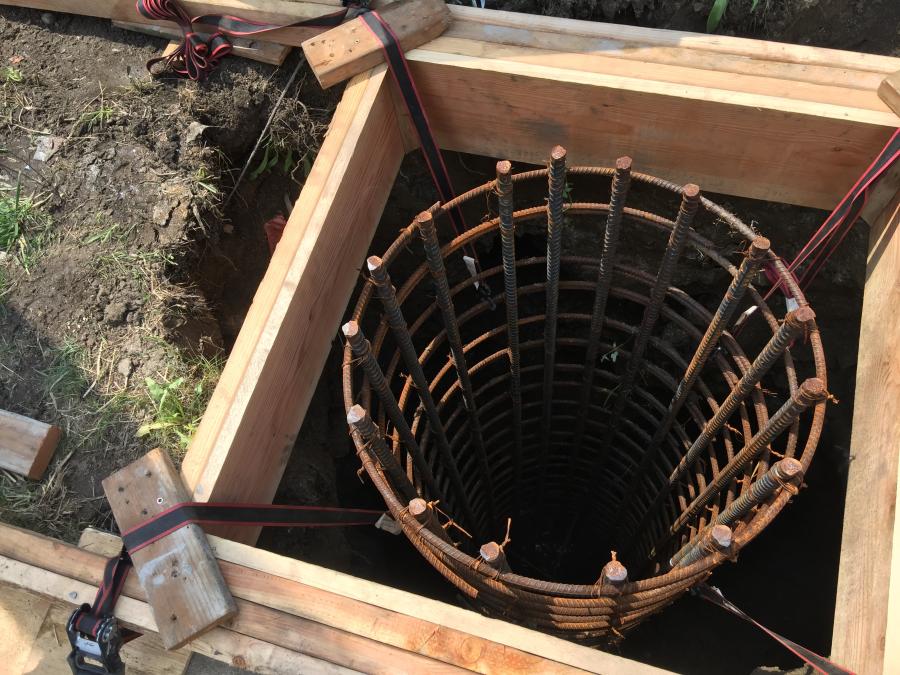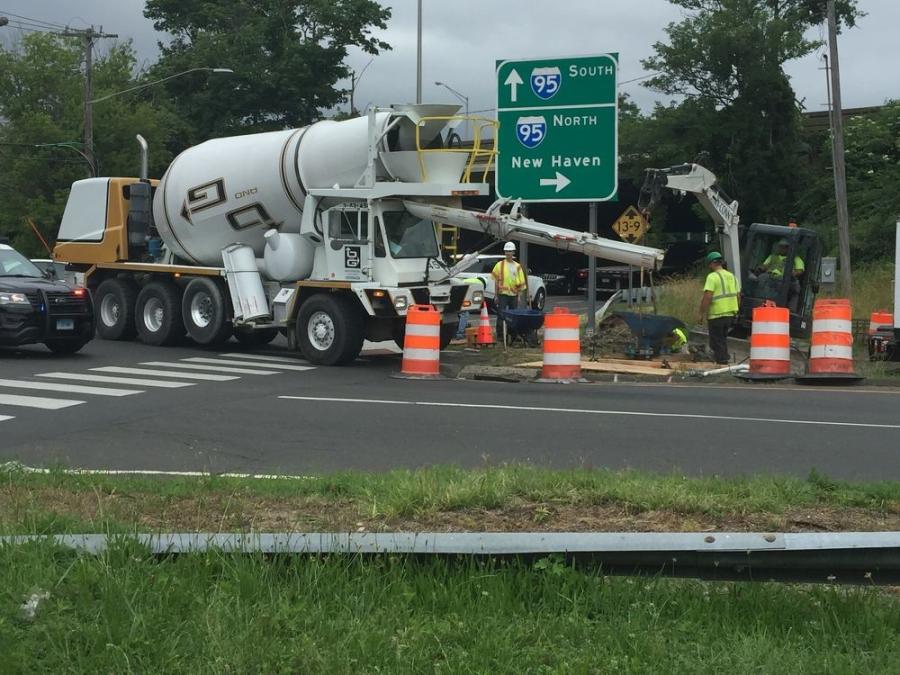[ad_1]
Crews pour the mast arm foundation at the northbound ramp of I-95.
Prior to the installation of new street lights featuring Adaptive Signal Control (ASCT) technology, level crossings were dug on Arch Street in Greenwich, Connecticut.
“The level crossings have been excavated and all of the concrete foundations that support the steel poles for the traffic lights have been put in place,†said Ross Rizzo, vice president of the NY-Conn Corporation of Danbury, Connecticut. , the contractor on the site. “We dug the foundation 12 to 13 feet deep and poured concrete and installed a reinforcing cage with eight anchor bolts. Then we installed steel mast arms that were designed for each intersection. “

He said the company used Takeuchi and Bobcat mini excavators, John Deere backhoes and Altec pressure excavators in the field as well as six-wheel dump trucks.
The work continued, but with a major problem.
“The biggest problem is hardware delays due to COVID,†Rizzo said. “We are still waiting for the LEDs which are now scheduled for mid-December. We cannot install the lights without this component.
“And there are always utility conflicts,†added Rizzo. “We are drilling so deep into the ground and it requires coordination from the start, which we did for this project.”
Gabriella Circosta-Cohee, chief engineer for Greenwich, said the old mast arms and controller boxes will be dismantled once the new LED signal heads are installed and the ASCT is operational.
“The installation of the overhead fiber wires and connection will take place next, followed by the installation of the traffic light heads and system integration,†she said.
The project focuses on five signposted intersections on Arch Street: Arch Street and Railroad Avenue, Arch Street and Horseneck Lane, Arch Street and I-95 southbound, Arch Street and I-95 northbound, and Arch Street and Steamboat Road / Museum Drive. Arch Street has an average traffic volume of 35,000 vehicles per day and, according to the city, “Adaptive Signal Control technology will detect and respond to heavy traffic volumes in a timely and efficient manner to improve safety and the flow of people. and goods in the hallway. .
“ASCT will maximize the efficient use of green time at intersections, reduce queues on the I-95 main line during heavy traffic peaks, high volume days and incidents on I-95, and optimize progression through the close intersections along Arch Street. “
“Greenwich’s use of ASCT is the first of its kind in the region and is based on the synchronization of cameras which will detect the signals in traffic, the length of the signals at each intersection and formulate the signal duration for traffic lights. red and green, â€said Circosta -Cohée.

Rizzo added, “This is one of the first times it has been used to coordinate signals to keep traffic flowing and Arch Street is very busy due to its proximity to I-95.”
Greenwich uses McCain ASCT adaptive software, which the company says “generates optimal signal timing parameters on an arterial network by adjusting cycle lengths, phase divisions and offsets based on prevailing traffic.” It provides a suite of synchronization strategies to improve operations. and mobility. “
“Synchronizing lights with ASCT on I-95 ramps in a high traffic area will save on congestion and improve air quality by eliminating wait times,†said Circosta-Cohee.
Construction of the Arch Street site began in August 2020 and the installation of street lighting will be completed in February 2022. The site budget is $ 2,197,393, most of which is paid for by a federal mitigation grant. congestion and air quality. The City of Greenwich will pay for a portion of the work which includes a design fee of $ 554,000 and an inspection fee of $ 282,000. CEG
[ad_2]

